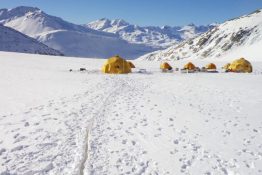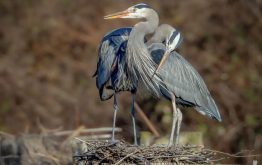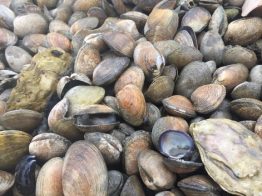Most things that humans build need a little maintenance every now and again. That’s no different for the Regional Cabled Array, a high-tech engineering marvel off the Pacific Northwest coast studded with all kinds of oceanographic equipment that gives humans a real-time, 24/7 look at what’s happening under the sea surface. The lengths that scientists and engineers go to keep the array working and up to snuff is extraordinary, and they are currently at sea providing its annual check-up.
Read more »An 85-year-old fishing club’s records reveal the secrets of Puget Sound salmon
Few people would consider launching a boat into Seattle’s Elliott Bay on a winter morning. It’s cold, dark, and more often than not, wet. But the steadfast members of Seattle’s Tengu Club, a Japanese American fishing club that held its first annual salmon derby in 1946, can reliably be found doing just that. In the 85 years since it was founded, participants have gathered on the shores of West Seattle each winter to reconnect and fish for resident Puget Sound Chinook salmon, also known as blackmouth because of their dark-colored gums.
Read more »New UW Photonic Sensing Facility will use fiber-optic cables for seismic sensing, glaciology and more
The fiber-optic cables that travel underground, along the seafloor and into our homes have potential besides transmitting videos, emails and tweets. These signals can also record ground vibrations as small as a nanometer anywhere the cable touches the ground. This unintended use for fiber-optic cables was discovered decades ago and has had limited use in military and commercial applications. A University of Washington pilot project is exploring the use of fiber-optic sensing for seismology, glaciology, and even urban monitoring.
Read more at UW News »Bird behavior influenced by human activity during COVID-19 lockdowns
A new University of Washington study led by Olivia Sanderfoot reports that many birds were just as likely to be found in highly developed urban areas as they were in less-developed green spaces during the peak of the COVID-19 lockdowns. The paper was published Aug. 11 in the journal Scientific Reports. “Our findings suggest that some birds may have been able to use more spaces in cities because our human footprint was a little lighter,” said Sanderfoot, who completed the study as a doctoral researcher in the UW School of Environmental and Forest Sciences and is now a postdoctoral scholar in the Department of Ecology and Evolutionary Biology at the University of California, Los Angeles.
Read more at UW News »Whodunnit? Uncovering the mystery of a tiny toxin killing shellfish in Puget Sound
Around 50 years ago, Pacific oysters in the Puget Sound started dying at noticeably increasing rates during the summer, causing residents and scientists to wonder why. Researchers in what is now the School of Aquatic and Fishery Sciences investigated many factors that may cause mortalities such as bacteria, reproductive stress related to spawning and changes in other environmental conditions. The evidence collected pointed towards stress on the animals when they spawn, as the Pacific oyster spends a lot of their energy on reproduction.
Read more »





